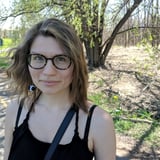Log in or create a free Rosenverse account to watch this video.
Log in Create free account100s of community videos are available to free members. Conference talks are generally available to Gold members.
Summary
We got into UX research to make products work better for humans. However, the pace of product iteration has gotten so fast, our research resources have gotten so thin, that we are continuously being asked to be faster, while also bringing more pithy - more relevant findings. Product teams don’t have the time to hear long readouts. “How does this impact the decision I need to make this week?” they want to know. The best way to ensure research insights are both timely and relevant is to make your research synthesis process collaborative. Using a canvas to co-synthesize with your team can be fun, speedy and incredibly impactful. In this talk, Shipra Kayan from Miro gives an inside look at Miro’s research process. We follow an example that shows how the teams run a user testing session (moderate 5 tests, synthesize, reflect and make decisions) in just one and a half days during a design sprint. See hacks and tips for importing data, tagging, clustering, facilitating and presenting all from a single space. Walk away with new ideas for how to synthesize collaboratively with your cross-functional teams to immediately impact design decisions.
Key Insights
-
•
Research speed must match accelerated business timelines to maintain relevance.
-
•
Collaborative workshops during research briefing improve stakeholder buy-in and uncover hidden fears.
-
•
Most researchers work solo on study design, synthesis, and presentations, but increasing collaboration here boosts impact.
-
•
Anonymous input modes in Miro reduce groupthink and reveal diverse stakeholder perspectives.
-
•
AI clustering on sticky notes quickly surfaces key themes but requires human refinement.
-
•
Pre-tagging notes and collaborative tagging during user tests help organize data efficiently for faster synthesis.
-
•
Copy-pasting from spreadsheets into Miro as stickies preserves color-coded metadata for filtering and analysis.
-
•
AI-generated synthesis docs provide useful draft starting points, but manual editing is crucial for quality.
-
•
Bias in qualitative research can be mitigated through team scorecards and guided discussions with a shared skepticism mindset.
-
•
Not all AI uses add value; generating synthetic data for personas may lead to derivative, unhelpful insights.
Notable Quotes
"I promise chief design evangelism is not religious."
"How can we make research keep up with the speed of changes in the business?"
"Research insights should belong to the team, not just the researcher."
"People don’t talk about their real fears in stakeholder meetings, and that hurts research credibility."
"Workshops are not just about input, but about diverging and converging to make decisions together."
"Private mode in Miro lets you get the most variety of input by making contributions anonymous."
"AI clustering gives a first stab at themes, but you have to move things around yourself."
"I get asked if you can place one sticky in multiple clusters—AI doesn’t support that yet, but I hack it."
"I prefer bias from multiple observers instead of just one when analyzing qualitative data."
"Synthetic data created by AI—like fake personas and journeys—is super derivative and often not insightful."
Or choose a question:















More Videos

"Generative AI is not creative; it’s just pattern finding and recycling what’s been done before."
Nick LewisDesigning and building low-carbon websites independently
November 18, 2025

"Everyone has a plan until they get punched in the mouth, said Mike Tyson."
Adam ThomasSurvival Metrics – Making Change in a Fast, Data-Informed, and Politically Safe Way
December 6, 2022

"Use systems thinking to connect insights and show how research impacts organizational strategy holistically."
Megan Blocker Amy Bucher Katie Hansen Ricardo Martins Nidhi Singh RathoreDay 2 Theme Panel
March 12, 2025

"Local women researchers in crisis zones help ensure safety and allow authentic stories to emerge."
Dr. Jamika D. Burge Mansi GuptaAdvancing the Inclusion of Womxn in Research Practices
September 15, 2022

"We were reinventing the wheel every time we entered a new market, which was incredibly slow and inefficient."
Tamara KartoziiaThink global, adapt local: how service design accelerated B2B market entry by 6 months
November 20, 2025

"The messiness and ambiguity of cultural change is by design; discomfort is part of the natural process."
Steve ChaparroBringing Into Alignment Brand, Culture and Space
August 13, 2020

"The in-house researcher has some elements of the client and stakeholder roles."
Steve PortigalLooking Back…to Look Ahead
March 26, 2024

"Collaboration among technologists, ethicists, and healthcare professionals is key."
Vincent BrathwaiteOpener: Past, Present, and Future—Closing the Racial Divide in Design Teams
October 22, 2020

"You can’t just break apart these components and type; instead, you change their properties to adjust labels, colors, or icons."
Jack BeharHow to Build Prototypes that Behave like an End-Product
December 6, 2022
















